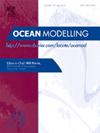可解释的机器人工智能和深度学习算法,用于多输出波特性预测
IF 2.9
3区 地球科学
Q2 METEOROLOGY & ATMOSPHERIC SCIENCES
引用次数: 0
摘要
准确预测波浪特性对有效利用波浪能和确保海上作业安全至关重要。本文利用澳大利亚昆士兰州Mooloolaba浮标装置的数据,比较了13种机器和深度学习算法来预测波浪特征。该方法与传统方法不同,通过对六种波浪特征进行多输出预测,从而更全面地了解波浪行为。此外,它还通过可解释的人工智能深入研究了最有效模型的内部工作原理,揭示了其卓越性能背后的复杂机制。结果表明,在处理多输出回归挑战时,模型性能优异,误差值最小。研究结果强调了这些算法在预测短期(30分钟)和短期(1小时)内即将到来的波浪数据方面的巨大潜力,允许及时干预近岸设备维护和激活警报系统。本文章由计算机程序翻译,如有差异,请以英文原文为准。
Explainable artificial intelligence of machine and deep learning algorithms for multi-output prediction of wave characteristics
Accurately predicting wave characteristics is essential for efficiently harnessing wave energy and ensuring safe maritime operations. This paper compares thirteen machine and deep learning algorithms to forecast wave characteristics using data from a buoy installation in Mooloolaba, Queensland, Australia. The approach diverges from tradition by making multi-output predictions across six wave characteristics, providing a more comprehensive understanding of wave behavior. In addition, it delves into the inner workings of the most effective models through explainable artificial intelligence, revealing the intricate mechanisms underlying their superior performance. The results showcase excellent model performance with minimal error values when dealing with multi-output regression challenges. The results underscore the remarkable potential of these algorithms to predict upcoming wave data on both short-term (30 min) and near-term (1-hour) horizons, allowing for timely intervention for nearshore device maintenance and activation of alert systems.
求助全文
通过发布文献求助,成功后即可免费获取论文全文。
去求助
来源期刊

Ocean Modelling
地学-海洋学
CiteScore
5.50
自引率
9.40%
发文量
86
审稿时长
19.6 weeks
期刊介绍:
The main objective of Ocean Modelling is to provide rapid communication between those interested in ocean modelling, whether through direct observation, or through analytical, numerical or laboratory models, and including interactions between physical and biogeochemical or biological phenomena. Because of the intimate links between ocean and atmosphere, involvement of scientists interested in influences of either medium on the other is welcome. The journal has a wide scope and includes ocean-atmosphere interaction in various forms as well as pure ocean results. In addition to primary peer-reviewed papers, the journal provides review papers, preliminary communications, and discussions.
 求助内容:
求助内容: 应助结果提醒方式:
应助结果提醒方式:


